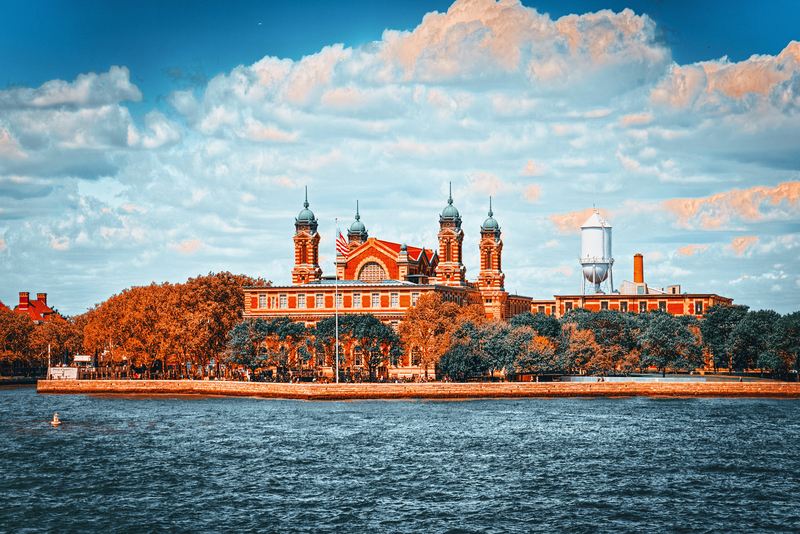Having an Italian surname or ancestor isn’t enough to call yourself “Italian.” Nor is it sufficient to sing along to popular songs, string enough words in Italian to book a hotel, or have spent your childhood Sundays eating pasta at grandma’s house. The first thing to do is to define and consider yourself Italian-American, by acknowledging that part of your heritage is rooted in the Belpaese’s culture and language. Doing so also means feeling part of a community where you recognize yourself in traditional elements that bring you close to those around you. It means knowing your own heritage, knowing where you come from and the plethora of events you experienced as a community.
October is important for the rediscovery and valorization of the Italian-American heritage, and October 2022 will always remain special for Italian-American migrants, because that’s when, in Saint Peter’s Square in Rome, Pope Francis canonized Giovanni Battista Scalabrini, the bishop from Lombardy who spent his life helping Italians who traveled across the ocean to try their luck in the New World. Twenty-five years ago, on the occasion of his beatification, John Paul II defined him as the “Father of all Migrants:” here we speak of him because, religion aside, we must recognize the importance of his work from a social point of view. We must recognize the contribution he offered to the community by assisting migrants.
If we look at the calendar, speaking about it also lends us the opportunity to delve into the meaning of two Italian festivities that are approaching. As store windows clearly show, Halloween is a handful of days away but, in Italy, it’s only a commercial event imported from abroad, where children got into the habit, in more recent years, to dress up like witches and ghosts, get candies around town and randomly ring bells to bother people taking a nap. A sort of extension of what they do at Carnevale. It’s a “fake” festivity, which nevertheless has been somehow shadowing two important celebrations in Italy’s popular and traditional culture: All Saints, on the 1st of November, and All Souls, on the 2nd. The first honors all our saints, the second our faithful departed. Both are good reasons to remember the prelate from Como, whose personal history is so strictly connected to many Italian-Americans, a history often misunderstood and neglected, but that should be known and disseminated because only through knowledge we can fully understand who we have become. Even some of the incredibly long history of L’Italo-Americano and its readership has been affected by the work of Father Scalabrini and his people.
Scalabrini didn’t only understand the economic interests lurking behind heavy migratory fluxes, but he also had no hesitation in defining “human flesh merchants” the people who exploit (sadly, we have to use the present tense) migrants’ desperation. He couldn’t remain silent and indifferent so, on the 28th of November 1887 he founded the Congregation of the Missionaries of Saint Charles, and then the Missionary Sisters of Saint Charles: the family of the Scalabrinians was born. At the end of the 19th century, along with the lay missionaries for the assistance to migrants, the Scalabrinians supported migrants through their strenuous efforts to finally reach their “place in the sun” so far from home.
Scalabrini was a pioneer in his conception of migration in all its facets. He didn’t want people who had left home, often forever, to miss the spiritual and cultural support they needed to ensure their rights were safeguarded and to promote social inclusion in their destination countries. He believed that, even if you left, you wouldn’t and couldn’t forget your family and your country.
For him, a churchman, Faith was a vital tool to support and comfort, especially when practiced in one’s native language. The Scalabrinian missions were the practical and respected answer he gave to those migrants who would write to him, wrecked and hopeless, to say: “Send us a priest, please, because here we live and die like animals.”
Scalabrini, just like Saint Frances Xavier Cabrini, the founder of the Missionary Sisters of the Sacred Heart of Jesus and the first American citizen to be canonized in 1946, addressed his attention, his work and his missions to the most deprived, who were in search of employment to support their families back home and to improve their social status. There were people who often left their homeland out of desperation and, at the same time, hope, taking – quite literally – a leap into the dark, without knowing the language and the culture of the country they’d reached, nor the job they were to do. Without any awareness of their rights. Simple people who endured the most dangerous, most precarious work and living conditions, who were often exploited by their landlords and their bosses at work.
How many among us would do the same, without any of the “safety nets” we have today? Actually, how many of us have been benefiting from the well-being and comforts our immigrant ancestors created for us – a home, an education, even a career – despite all the sacrifices they made and the misery they endured? The systems of mutual relief and social protection we find in Little Italies across the country, in churches, and in the Case Italiane, are founded on our forefathers’ painful experiences.
And are those who know about them aware of the social value these institutions had for the community, a value that goes well beyond organizing events and electing beauty queens, even if it’s all done to create and preserve occasions to meet and bond?
Being Italian-American is also this: knowing the past to nurture the memory of who we’ve been.






























